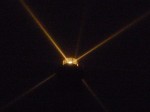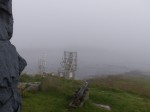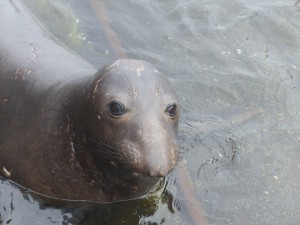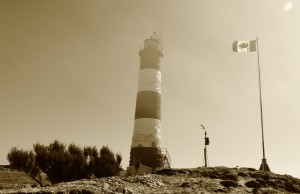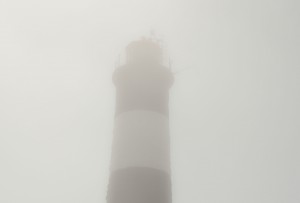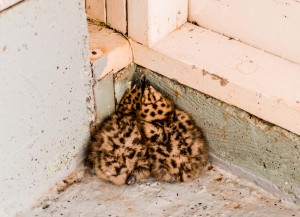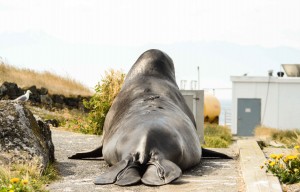~10 kts West wind all day. The fog continues.
Tour boats: 3
With this fog, it is impossible to know how many tour boats have actually come through the reserve this past week. Visibility is usually about 50m and not more than 250m (I checked using Google earth). All day I can hear the low boom of the ships fog horns as they move up and down the strait.
There are still lots of sea lions in the reserve. They are mostly on the North-East flats and South of the student house.
The elephant seal with the scabby molt is camped out on the grass next to the desalinator bunker, the rest are in the shallows next to the boat ramp.
[ Nature doesn’t need to be maintained; it only needs a little breathing room ]
This week, the 3rd International Marine Protected Areas Congress is happening in France. Their goal is to support the realization of having 20% of the worlds oceans under some form of protection by 2020. IMPAC provides a framework to evaluate the progress made towards this goal and to work on new solutions. Check out this Nat Geo blog for a brief summary of why marine protected areas are important: 3 lessons from MPAs around the world
The background noise generated by shipping vessels can have detrimental impacts on marine mammals. This brief media release (with a video) introduces some of the issues regarding noise from shipping traffic and its effect on marine mammals: ship noise impacts on whales. Original Article: Williams, R., et al. (2013) Acoustic quality of critical habitats for three threatened whale populations. Animal Conservation
-desalinator maintenance (changed cartridge filters, backflushed media filter)
-made a new lid for the water tank

